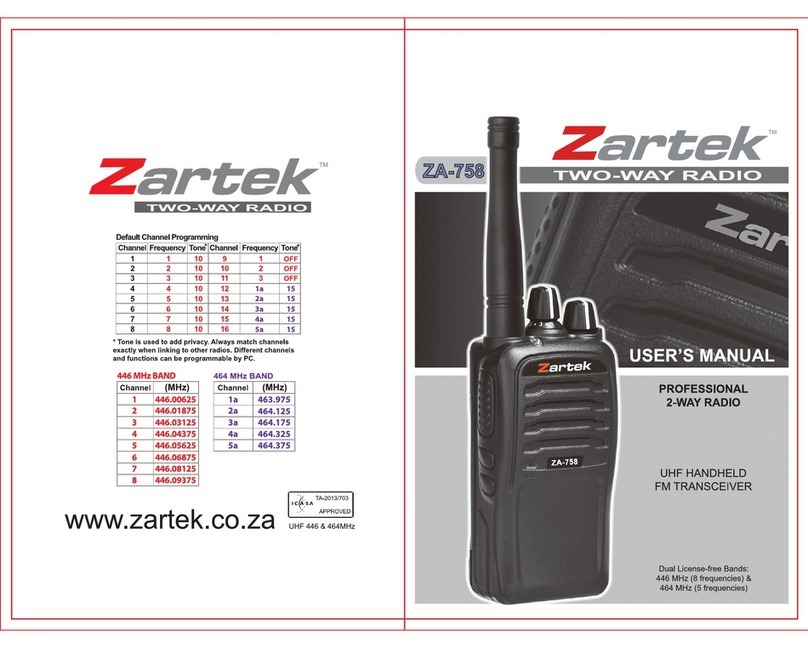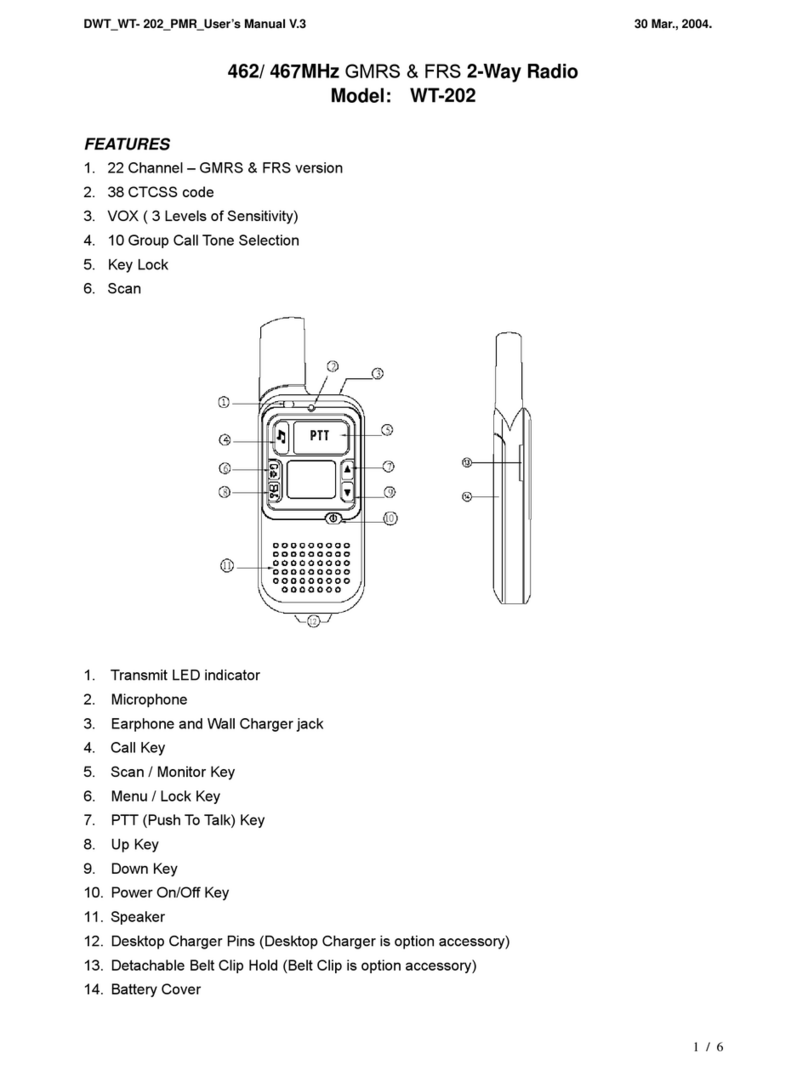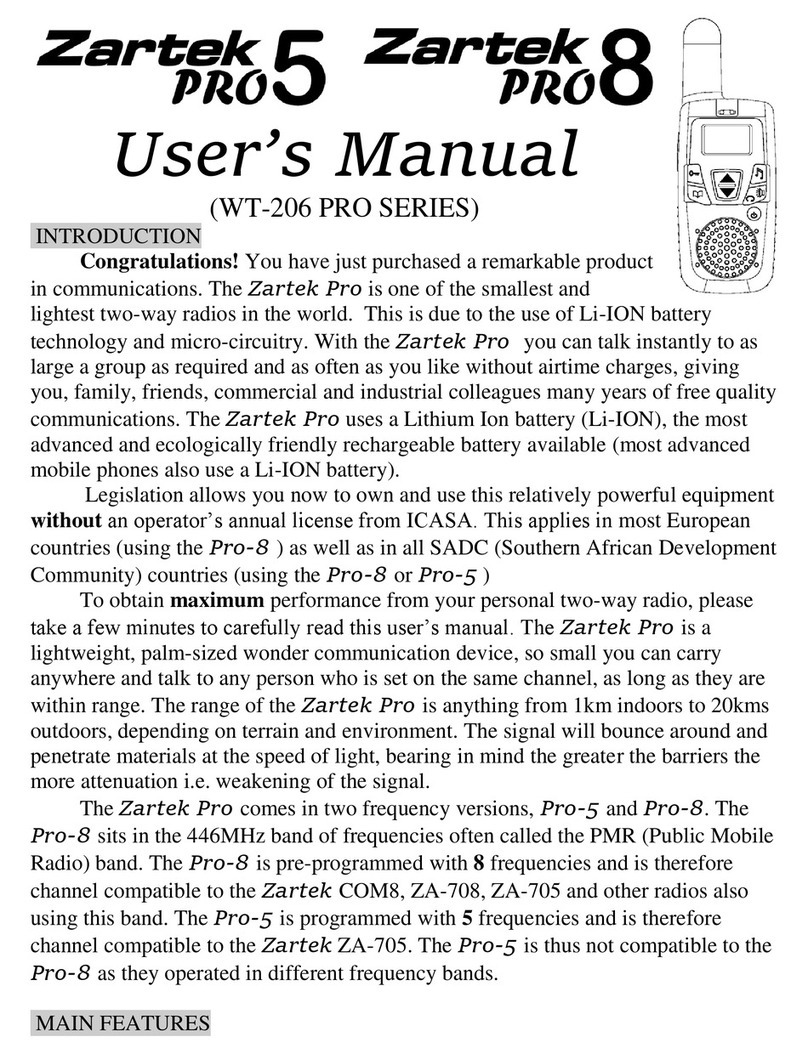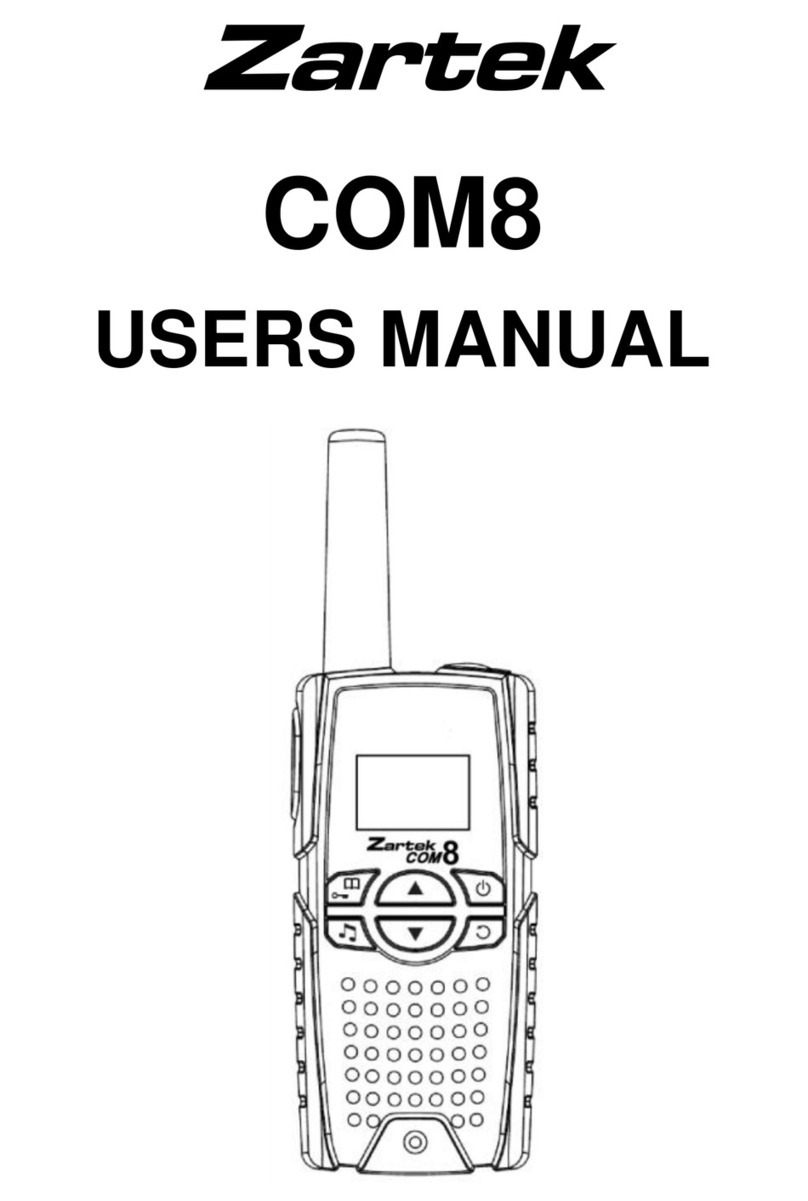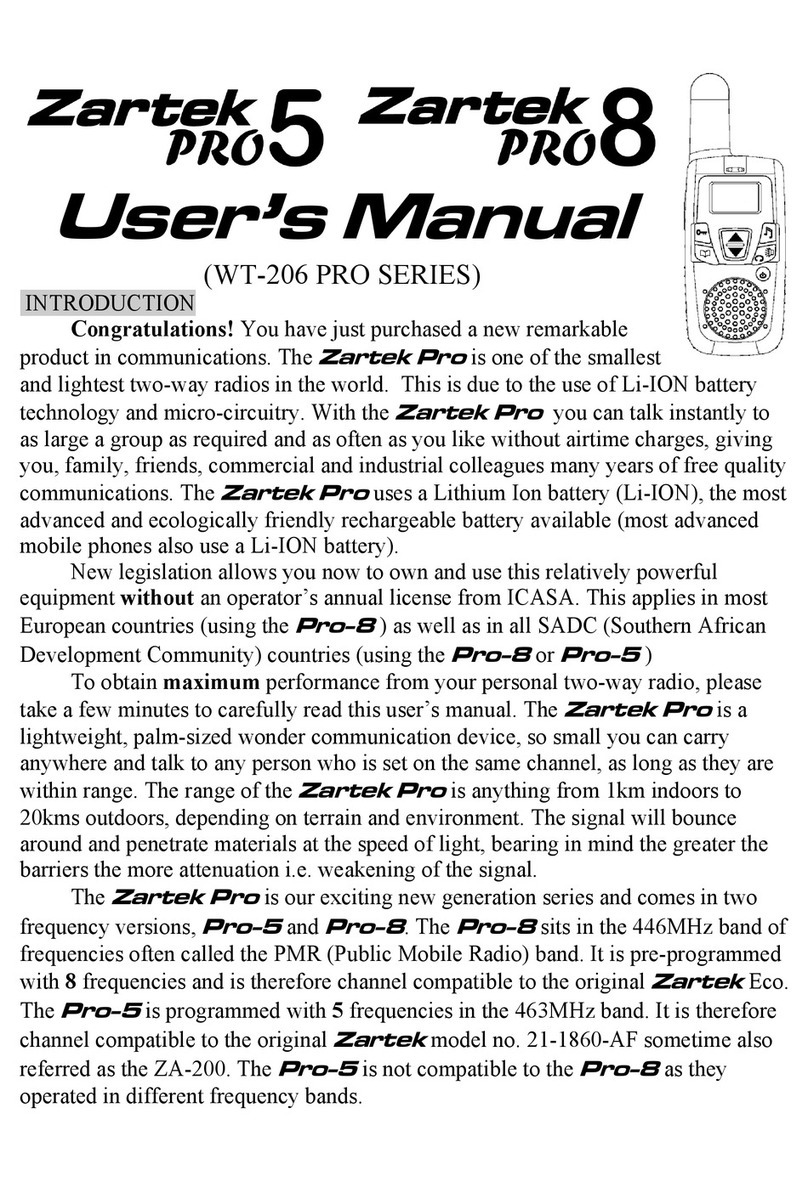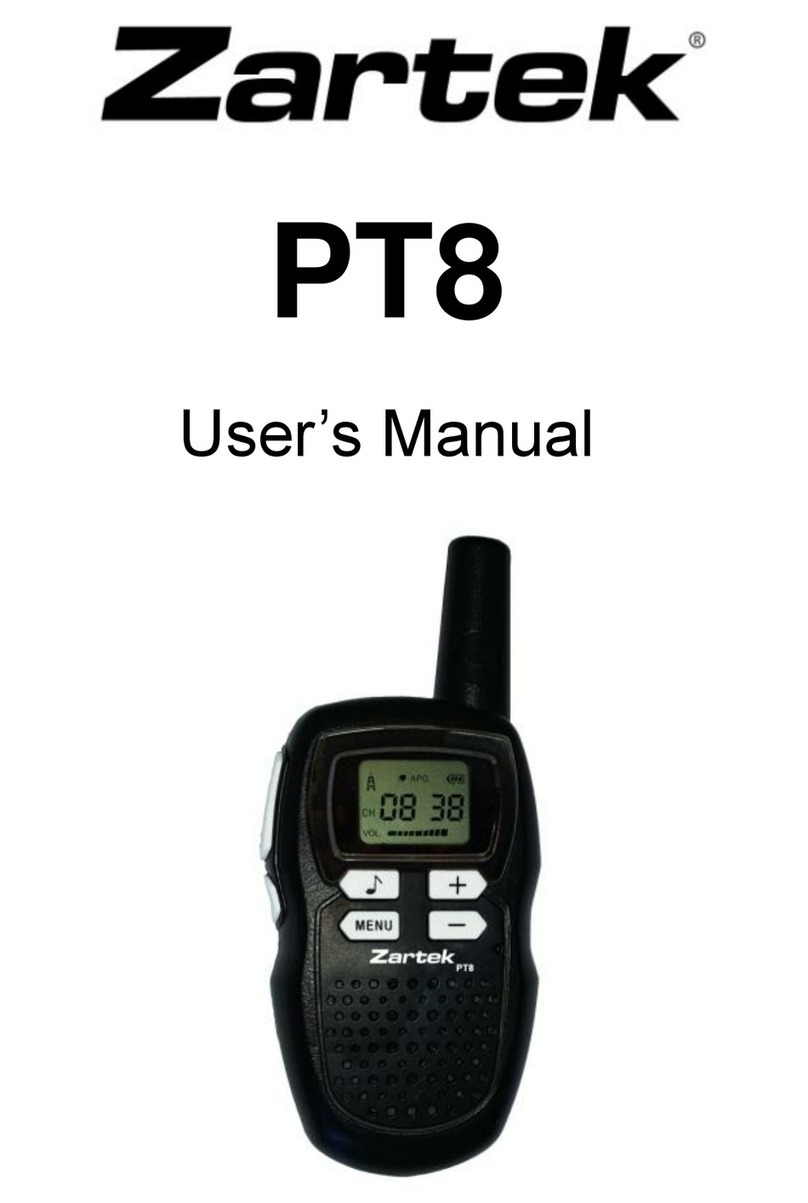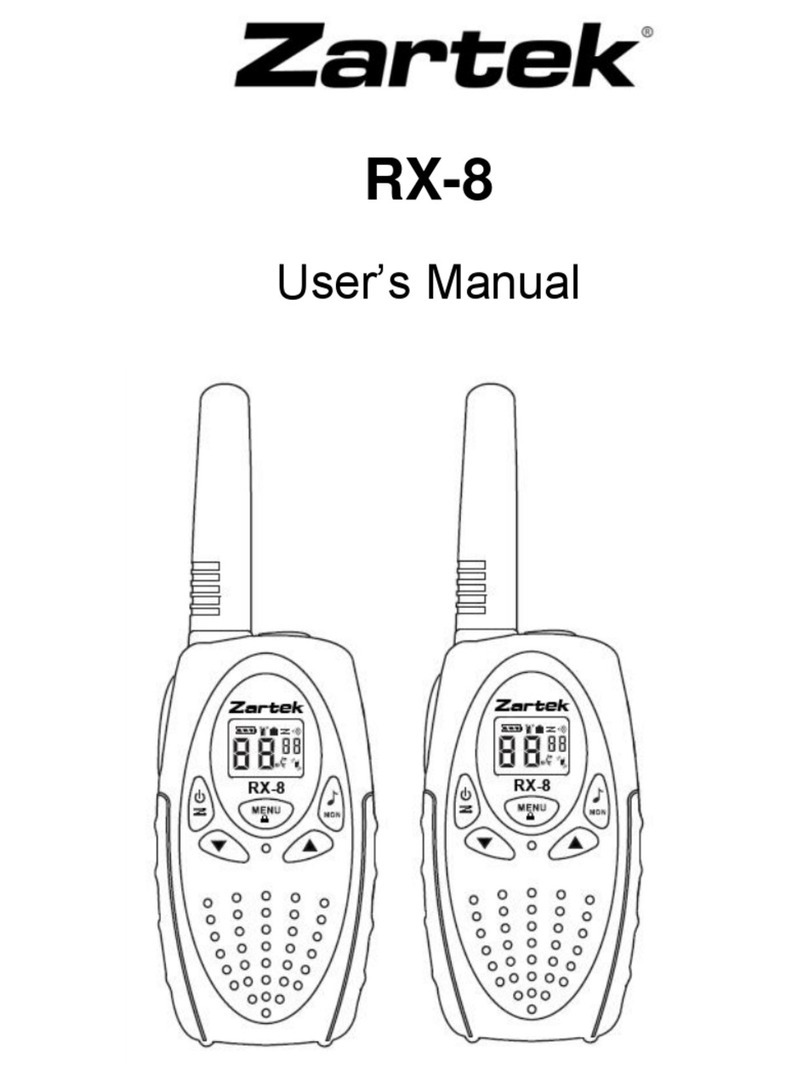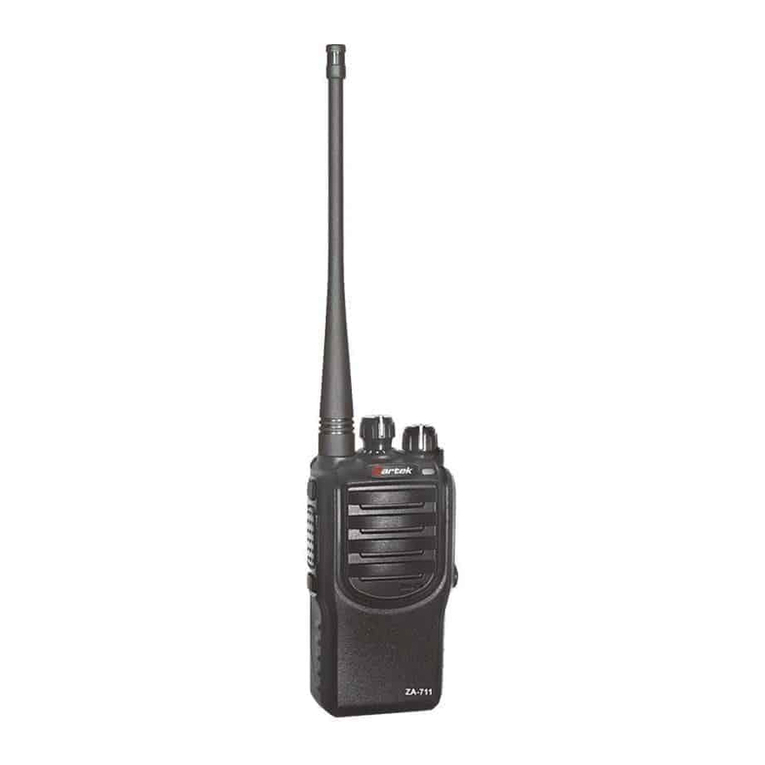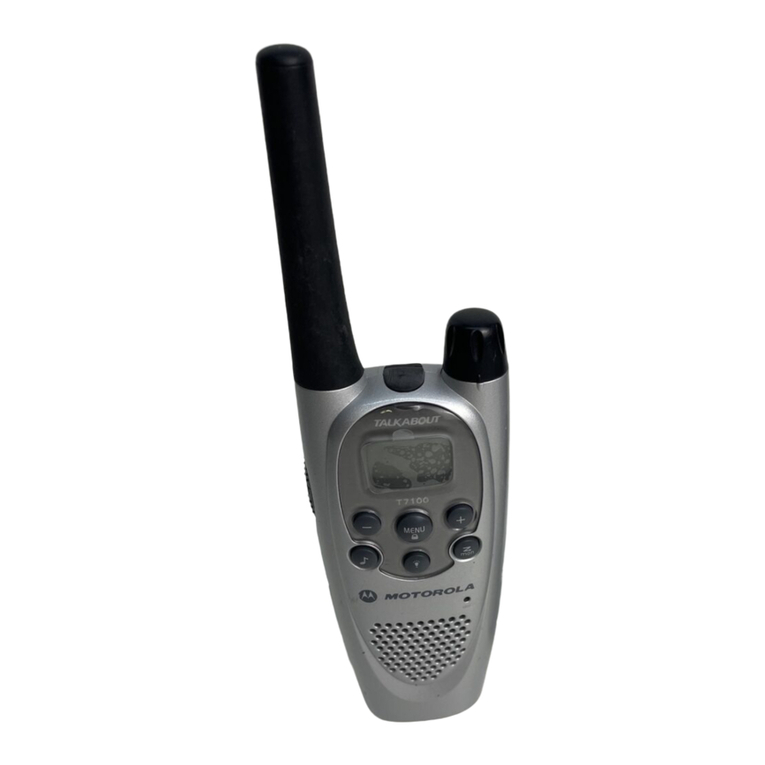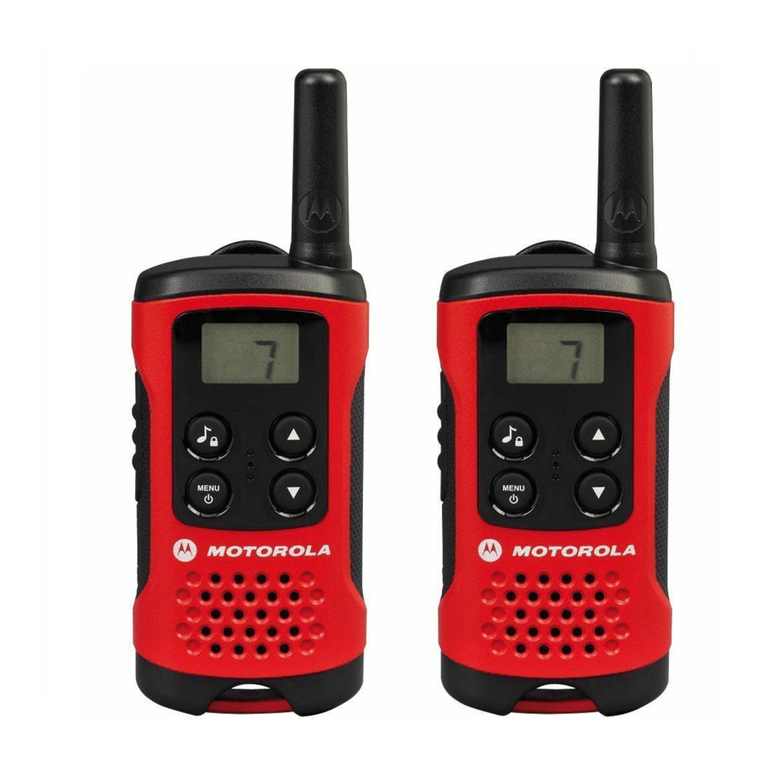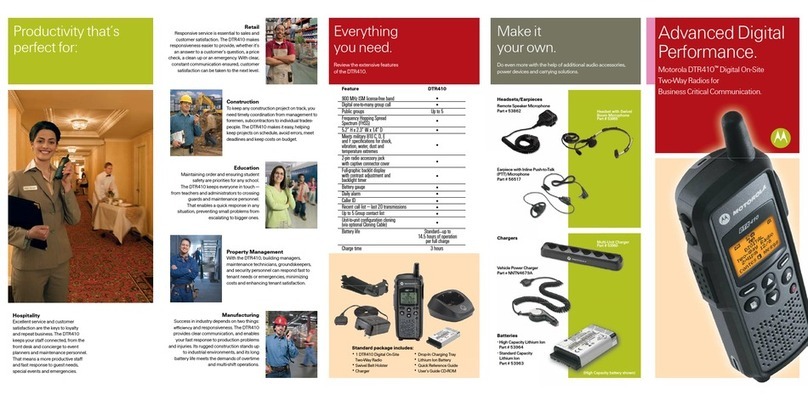
Warranty
There is a 12 month factory warranty on the unit. Warranty does not cover speakers,
battery or accessories. The product must be used for the intended purpose and not
subject to willful or accidental damage. If the product has been tampered with in any
way, the warranty shall be considered null and void.
For any queries, please email info@zartek.co.za
Safety Information
Study this manual carefully to understand your transceiver well.
For safety reasons, it is important that the user is aware of and understands the
potential hazards common to using any transceiver.
To clean the radio, wipe with a soft cloth dampened with water. Never use
solvents or cleaners on the radio, they can harm the body and leak inside,
causing permanent damage.
Your radio is low level splash proof but not waterproof. If the radio gets wet, turn it
OFF and remove battery immediately. Dry the battery compartment to minimize
potential water damage. Leave cover off battery compartment and do not use
until completely dry.
Handle the radio with care and never hold the radio by the antenna. Do not drop
or impact the radio as it contains sensitive electronics.
Do not operate the transceiver or replace/charge the battery in an explosive
environment (dust, gas, fumes etc).
Do not transmit without the correct antenna connected fully or the radio could get
damaged.
Switch the transceiver off whilst filling gas or when parked at a petrol station.
Do not open or modify the transceiver in any way.
Refer to a qualified technician for any service or repairs.
Do not expose the transceiver to long periods of direct sunlight, extreme hot
environments or surfaces.
Do not place the transceiver in excessively dusty, humid, wet and/or unstable
areas.
Please turn off the radio when you are close to a blast area or detonator zone.
Do not use any radio which has a damaged antenna. It may cause a minor burn
when the damaged antenna touches your skin.
To avoid the problems caused by EMI and EMC, turn off your radio where notices
“Please turn off your radios” are posted, such as hospitals.
Turn off your radio before boarding an aircraft. Any use of the radio must be in
accordance with airline regulations or flight crew’s instructions.
If a vehicle is fitted with an air bag, do not place the antenna of the radio within the
air bag expand area.
When the portable radio is transmitting, hold the radio in a vertical position and
speak into the Microphone.
If you carry a radio on your body, please keep the antenna away from your body
by at least 2.5cm when transmitting.
